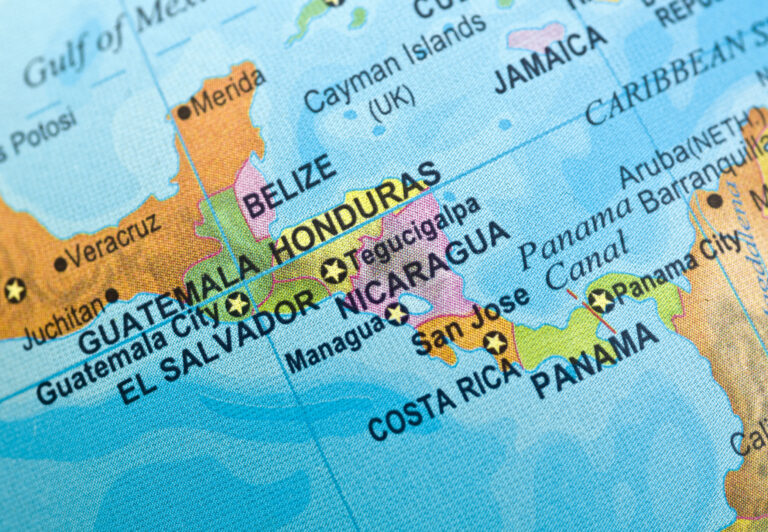New Zealand
According to “Population Issues for New Zealand,” the New Zealand National Report on Population submitted to the International Conference on Population and Development held 5-13 September 1994 in Cairo, the country’s population “will continue to grow for the next few decades .. .[with] a total population of 4.6 million [predicted] by 2031”1 (New Zealand’s 1993 population was put at 3.5 million; the 1991 national census counted just over 3.4 million).
The prediction for 2031 was based on the scenario of a “two-child family, net immigration of 5,000 per year, and an improvement in life expectancy of four years” over the intervening 35 years.2 Currently New Zealand’s total fertility rate (TFR) is slightly over 2.0 births per woman, hovering just below the replacement level of the 2.1 births needed to produce a stable population. Although it would appear that the first requirement of the population projection is being met, there are several caveats to consider.
As recently as 1982, the country’s TFR “reach[ed] an all-time low of 1.92 births per woman.”3 Such a level, of course, will in time result in a declining population. The very modest increase in the TFR that has subsequently taken place hardly affords any room for optimism about future natural increases in the nation’s population. Indeed, the compilers of New Zealand’s population report obviously expect little long-ten contributions from natural increases — the excess of births over deaths — since they merely postulate a replacement level TFR, at best, in future years.
But, in view of the steady aging of New Zealand’s population,4 and the decrease in the numbers of the under- 1 5-year age group5 — the cohort from which the country’s next group of potential mothers will be drawn —— the stage is set for a major population decline within the first third of the next century.
The populations aging will automatically move women who are still in their childbearing years (ages 15-45), out of their prime reproductive years under age 30, and bring them into the later stages of their reproduction lives (over age 35). If the population continues to reproduce at a below replacement rate,6 the somewhat smaller cohort of new potential mothers, will not produce as many children as the displaced older female population did in its prime.
Meanwhile, the number of deaths will steadily increase, slowly at first and then more rapidly as the population continues to age. The recent shrinking natural increase experienced by New Zealand is a forerunner of the inevitable population decrease to come— if current trends remain unabated. While New Zealand’s natural increase had been as high as “44,000 in 1962,”7 in 1991, births outnumbered deaths by 33,500; in 1993, by 31,600.8 In 1994, the margin slipped again to 30,441.9
All prospects for future increases in New Zealand’s population thus lie with a positive net migration (more arrivals than departures). The external migration gain of 5,000 per annum was a carefully chosen figure. It represents “the average for the last 90 years.”10
Like many averages, however, considerable fluctuations in both magnitude and direction may be masked by a single “average” statistic. For instance, as recently as 1929, New Zealand experienced a “net outflow of 26,500” persons. More importantly, “in the 25 years ending 3 l March 1993, total arrivals have exceeded total departures by only 200 .”11 So much for a 90 year average!
Indeed, during the eight year period 1977-84, New Zealand’s annual net migration was a minus 10,155 .12 If New Zealand is counting upon net positive migration to sustain or increase its future population levels, it had better be prepared for disappointment.
A more realistic assessment of New Zealand’s future population prospects was this candid admission in a 1990 report: “the likelihood [is] that there will be an absolute decline in [the] numbers of people next century.”13
The report went on to state that there is “little evidence to suggest that there will be either a sustained rise in fertility during the next 60 years, or levels of net immigration which are consistently above 10,000 [a figure being considered by the Minister of Immigration].” However, an “increase by around 100 percent over the [next] 60 years” was predicted for the number of yearly deaths, a direct consequence of the “significant aging of the population which is occurring and will continue to occur.” The number of deaths annually was placed “somewhere between 51,000 and 61,500 in 205l,” depending upon which migration scenario was predicted.14
The report concluded that “In all of the migration scenarios the number of deaths exceeds the number of births dining the 2030’s and, except for the projection which allows for net gains of 10,000 per year from international migration, absolute population decline would commence during [that] decade.”15
Australia
Australia’s population of approximately 18 million people resides in a country with a land area slightly under three million square miles, giving the nation one of the lowest population densities in the entire world. Despite Australia’s vast, largely uninhabited land, the country’s prospects for future population growth are quite similar to New Zealand’s.
Indeed, Australia’s current total fertility rate — 1.8 births per woman per reproductive lifetime16— is considerably lower than New Zealand’s and has been well below replacement level for two decades. As in the case of New Zealand, only the age structure of the populace, coupled with a positive net migration, has kept the population growing.
However, the handwriting is on the wall. More than 18 years ago an Australian government report, based on a “prolonged drop in [the nation’s] birth rate and a sharp decline [at that time] in immigration,” concluded that the nation “will have zero population growth by the year 2000 or perhaps before”17 Due to a rise in the level of immigration, that prediction has not come to pass. However, in 1992-3 immigration declined sharply and the country’s net migration dipped “to its lowest level since l976.” Inasmuch as “over the past decade the number of people permanently departing Australia has ranged between 20,000 and 30,000 per annum,”18 the country requires at least that many immigrants yearly to offset the outflow. At the moment that level is being obtained and births continue to exceed deaths by a comfortable margin.
In the early decades of the next century, however, the situation will change: deaths will rise sharply as the population ages and births will continue to decline as ever smaller cohorts of women continue to reproduce at below replacement levels. The country will fall into the state of natural population decrease with deaths exceeding births. Even a positive net immigration near current levels may prove insufficient to stern an absolute decline in population.
A report recently submitted to Australia’s House of Representatives spelled it out “With a continuation of fertility at 10 percent below replacement… and 30,000 net migration, the population will begin to decline between 2027 and 2040.”19
1 Population Issues, p. 20.
2 Ibid, p. 21.
3 Ibid, p. 13.
4 Ibid, p. 33
5 Ibid, see Figure 1.9, “Age and Sex Composition of Population, New Zealand,” p. 17, which reveals that the under 15-years female population (male too) of 1991 is actually slightly smaller than the corresponding cohort of 1961 despite an increase of more than 40 percent in the total population during the 30-year interval.
6 The generally accepted replacement level TFR of 2.10 births per woman actually results in a decreasing population as no allowance has been made for the increasing sterility-both natural and deliberate- of today’s womankind. A true replacement level TFR would b e of the order of 2.25 births.
7 Ibid, p. 12.
8 Ibid, p. 19.
9 New Zealand Herald, 17 August 1995.
10 Population Issues, p. 20.
11 Ibid, p. 15. (emphasis added)
12 Ibid, p. 65.
13 The human face of New Zealand: A context for population policy into the twenty-first century, Report of the Interdepartmental Committee on Population Policy Guidelines, Department of Statistics, Wellington (1990), p. 17.
14 Ibid.
15 Ibid.
16 Australia’s Population ‘Carrying Capacity’, House of Representatives Standing Committee on Longterm Strategies, 1994, Canberra, p. 18
17 “Falling population growth worries some Australians,” The New York Times, 5 June 1977, p. 11.
18 Note # 16, p. 3.
19 Ibid, p. 4.










